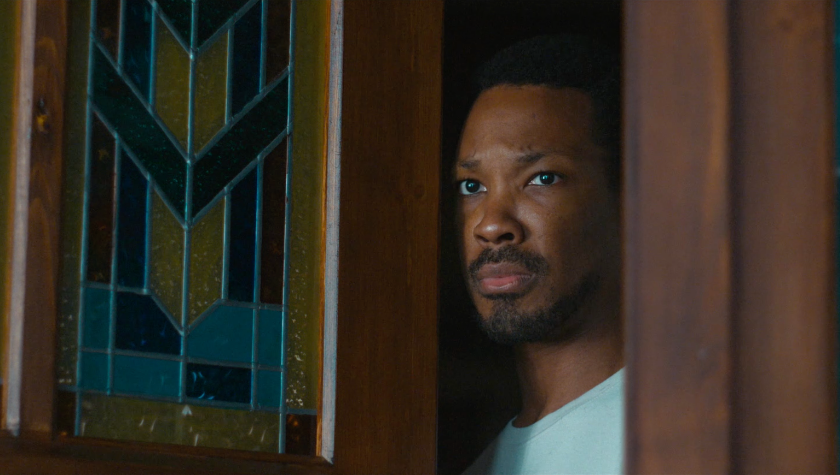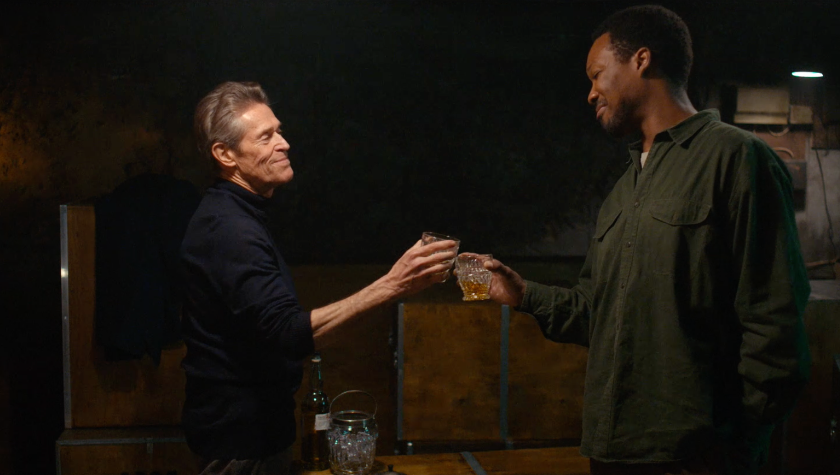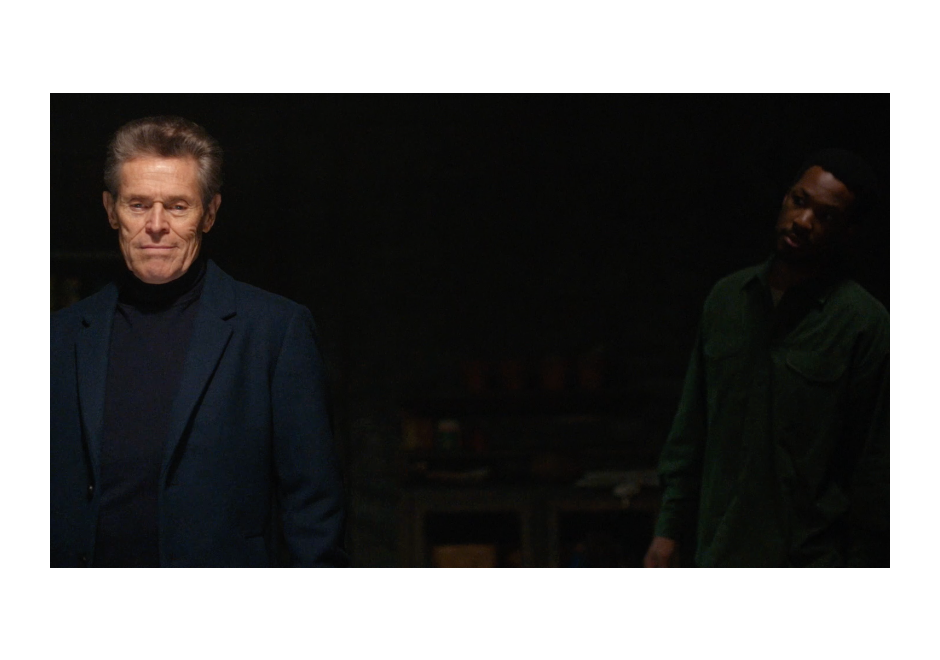The new psychological thriller, The Man in My Basement, is jam-packed with buried secrets, both real and metaphorical. Based on the novel by Walter Mosley (Devil in a Blue Dress, The Last Days of Ptolemy Grey), Charles Blakey (Corey Hawkins) lives in a house in Sag Harbor that’s been in his family for eight generations. Stuck in a rut after the recent death of his mother and uncle, the bank is about to foreclose on his home when he meets a mysterious stranger, Anniston Bennet (Willem Dafoe), who offers to rent Charles’s basement for the summer for a large sum of money. It’s an offer Charles can’t refuse.


Directed by Nadia Latif from a script written by Latif and Mosley, the film explores cultural legacy, morality, and the consequences of burying your past sins.
Coming from the world of theater, the British-Sudanese director’s path to screenwriting wasn’t straightforward. “I’ve been a theater director for the better part of two decades. I worked exclusively in new writing, helping playwrights make the most brilliant versions of their stories, but I never thought of myself as a writer.”
That changed when she attended the Sundance Lab a few years ago. Asked by her mentor, William Wheeler (Ray Donovan), to submit an original scene for the workshop, she wasn’t confident in her writing ability. To her surprise, her work was one of a handful chosen to be read aloud and discussed by the group. “Will said it was a great example of a scene where more than one thing is happening at the same time,” she says, but in the moment, she was overcome by emotion. “I was just sitting there trying not to sob. I had never written a scene in my life. He said, ‘You are a writer, you just need to call yourself that.’ And something in me shifted.”
That shift led her to Mosley’s novel. Though Mosley had written multiple drafts of the script himself, Latif felt the adaptation needed her own voice. “I said to my producers, I think I need to write on The Man in My Basement. It needs to be a marriage of me and Walter on the page, rather than me trying to guide his hand toward things that were in my head.”
Her focus was on deepening the characters and making the story personal. “The novel is full of big ideas - political, historical - but I wanted to tie those ideas to intimate experiences,” she says. “For me, it became about losing your parents, about becoming an orphan, and the grief and freedom that come with that. I think the film is darker and sadder than the novel because of that.”
Latif shares that a conversation with lead actor Corey Hawkins influenced how she wanted to depict the protagonist’s (Charles) story. Hawkins, a descendant of enslaved people, can only trace his ancestry back to a plantation where his family once lived. “There’s a schism in Black history where you can no longer track your history back,” Latif says. “That fascinated me. The contrast between a character whose family has lived in Sag Harbor longer than anyone, and my own Sudanese pride in Nubian heritage. It became a way of exploring how history lives in us, or sometimes vanishes from us.”


She also intended to carefully handle Willem Dafoe’s enigmatic character, Aniston Bennett, by not painting him as a simple villain. “He doesn’t believe himself to be evil at all. He thinks he’s a tool, a middleman just carrying out the work of others. That was influenced by white colonial holdovers I saw growing up in Africa. These men were never the top guys, always the fixers.” Dafoe and Latif studied The Laughing Man, a documentary about an ex-Nazi mercenary in Africa, to capture that unsettling mix of charm, matter-of-factness, and violence.
Equally important to Latif was giving her Black protagonist a morally complex interior life. “There’s a lack of representation of Black men who exist in moral ambivalence,” she says. “Charles isn’t innocent. He even says, ‘I used to think I was a good person with bad luck, but that’s not true.’ That realization, of having agency, was crucial. I wanted him to live in the gray, not as a saint or a stereotype.”
Significant imagery in the film includes several African masks that serve as both metaphors for identity and valuable objects, along with a house that becomes a hostile character. “The basement is where you repress everything you don’t want to face,” Latif says. “It’s also a tomb, a pilgrimage site, a holy space. Over time, the house itself becomes more hostile to Charles, almost expelling him from his own history.”
The Man in My Basement is a great example of how personal experience and cultural exploration can shape a book-to-film adaptation. Though working on dark, deeply psychological material can be tricky, Latif says writers should lean into it. “Nothing is more horrifying than real life. I don’t think you should ever feel like your story is too dark. Holding a light to the darker corners can be very meaningful work. I find it harder to be frivolous. Comedy sometimes feels impossible to me, so I say, if you want to go dark, go dark. There’s an audience for your story.”
The Man in My Basement is currently playing in theaters.

